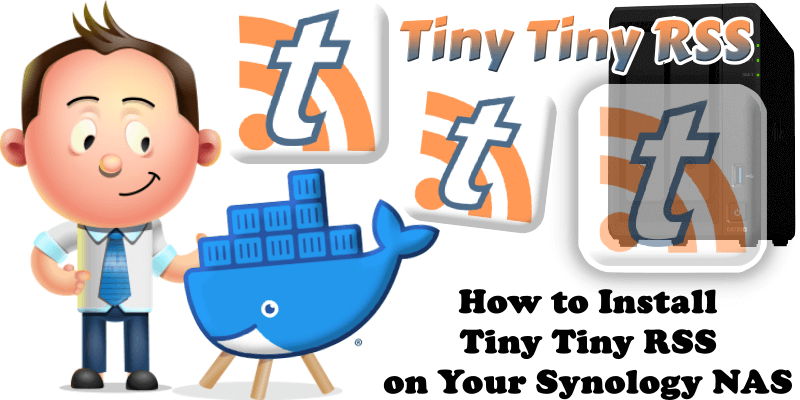
Tiny Tiny RSS aka TT-RSS is a free, open-source web-based news feed reader and aggregator designed for users who want to manage and read their RSS and Atom feeds in a centralized, self-hosted platform. It allows you to subscribe to your favorite websites, blogs, podcasts, or any content source that provides an RSS or Atom feed, delivering updates directly to your personal TT-RSS instance. Unlike cloud-based services like Feedly, TT-RSS is installed on your own Synology NAS, giving you full control over your data and privacy. Key features include a clean, customizable interface accessible via web browsers (with mobile-friendly views or dedicated apps available), support for feed categorization, filtering, and tagging, as well as options for sharing articles or integrating with third-party tools like email or social media. It supports automatic feed updates, keyboard shortcuts for efficient navigation, and even plugins to extend functionality, such as multimedia handling or full-text fetching for truncated feeds. TT-RSS is ideal for tech-savvy individuals or privacy enthusiasts who prefer a self-hosted solution over relying on external services, offering flexibility and power to tailor the feed-reading experience to their needs. In this step by step guide I will show you how to install Tiny Tiny RSS on your Synology NAS using Docker & Portainer.
STEP 1
Please Support My work by Making a Donation.
STEP 2
Install Portainer using my step by step guide. If you already have Portainer installed on your Synology NAS, skip this STEP. Attention: Make sure you have installed the latest Portainer version.
STEP 3
Go to File Station and open the docker folder. Inside the docker folder, create one new folder and name it tinyrss. Follow the instructions in the image below.
Note: Be careful to enter only lowercase, not uppercase letters.
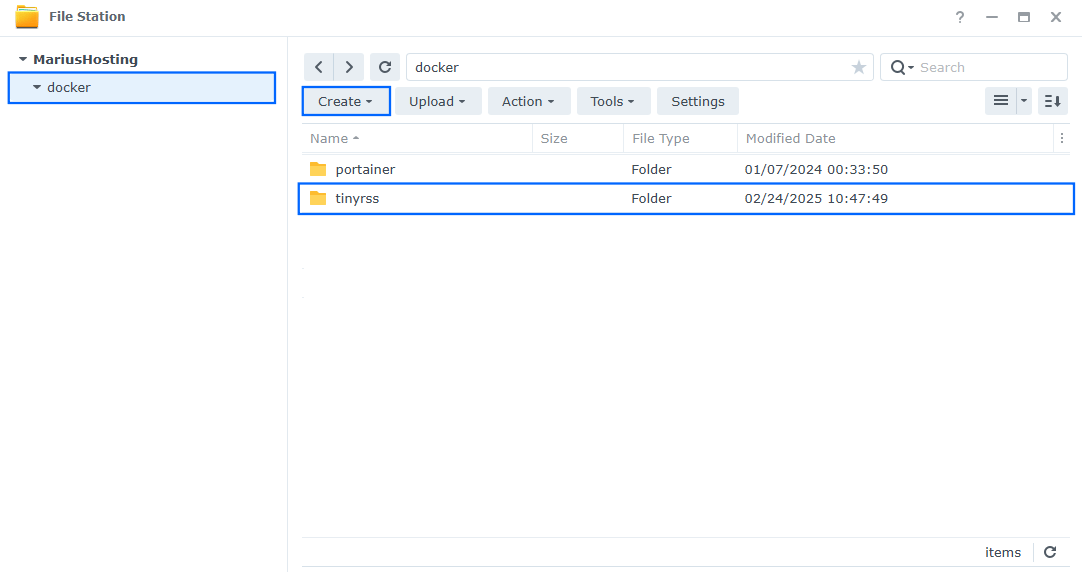
STEP 4
Now create two new folders inside the tinyrss folder that you created at STEP 3 and name them db and app. Follow the instructions in the image below.
Note: Be careful to enter only lowercase, not uppercase letters.
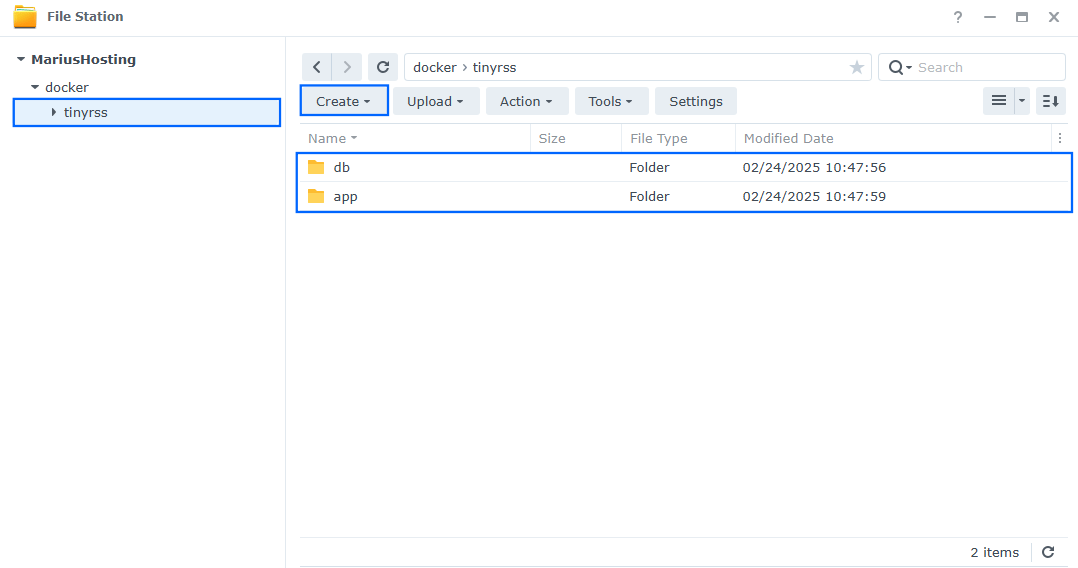
STEP 5
Log into Portainer using your username and password. On the left sidebar in Portainer, click on Home then Live connect. Follow the instructions in the image below.
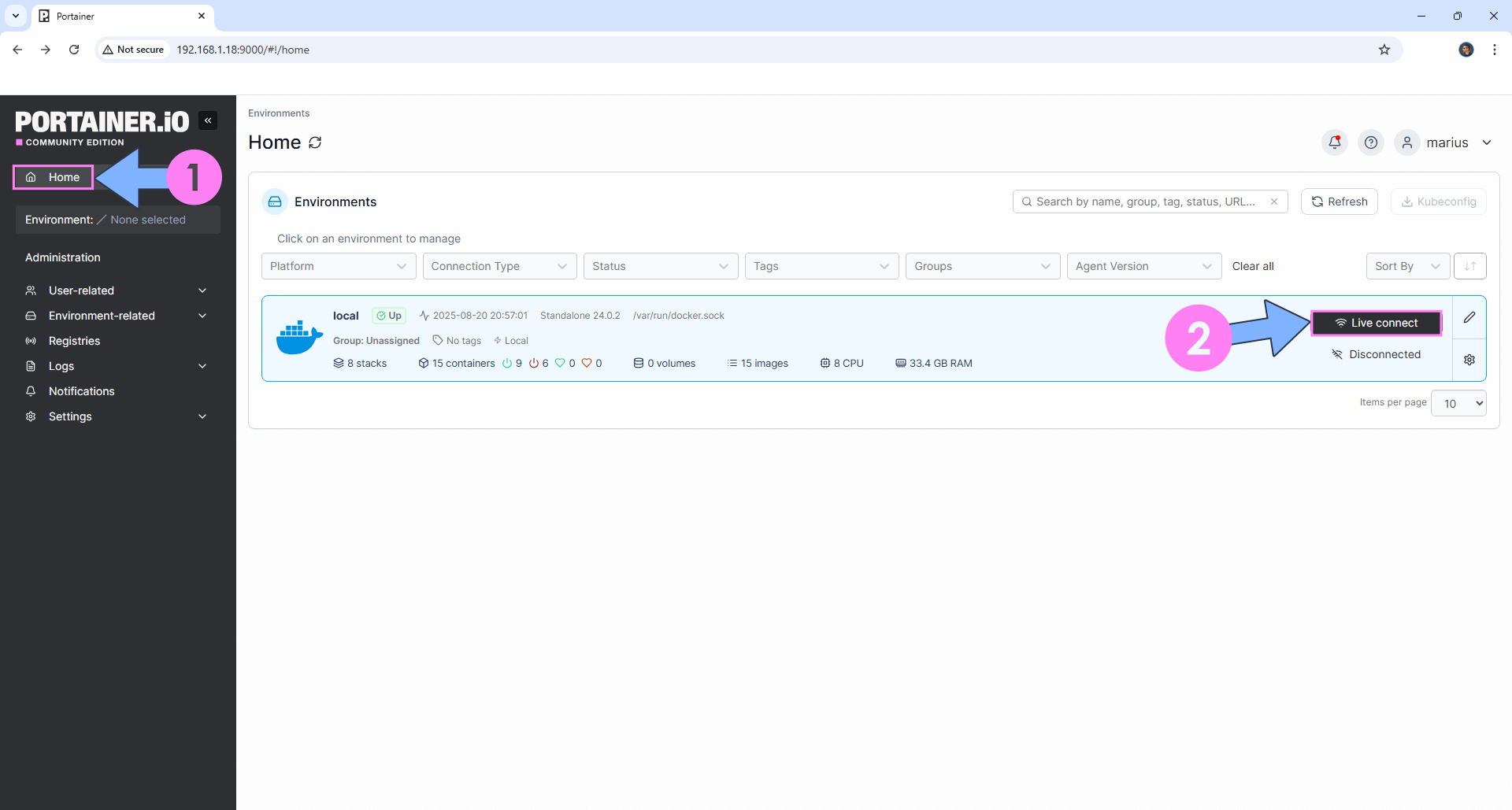
On the left sidebar in Portainer, click on Stacks then + Add stack. Follow the instructions in the image below.
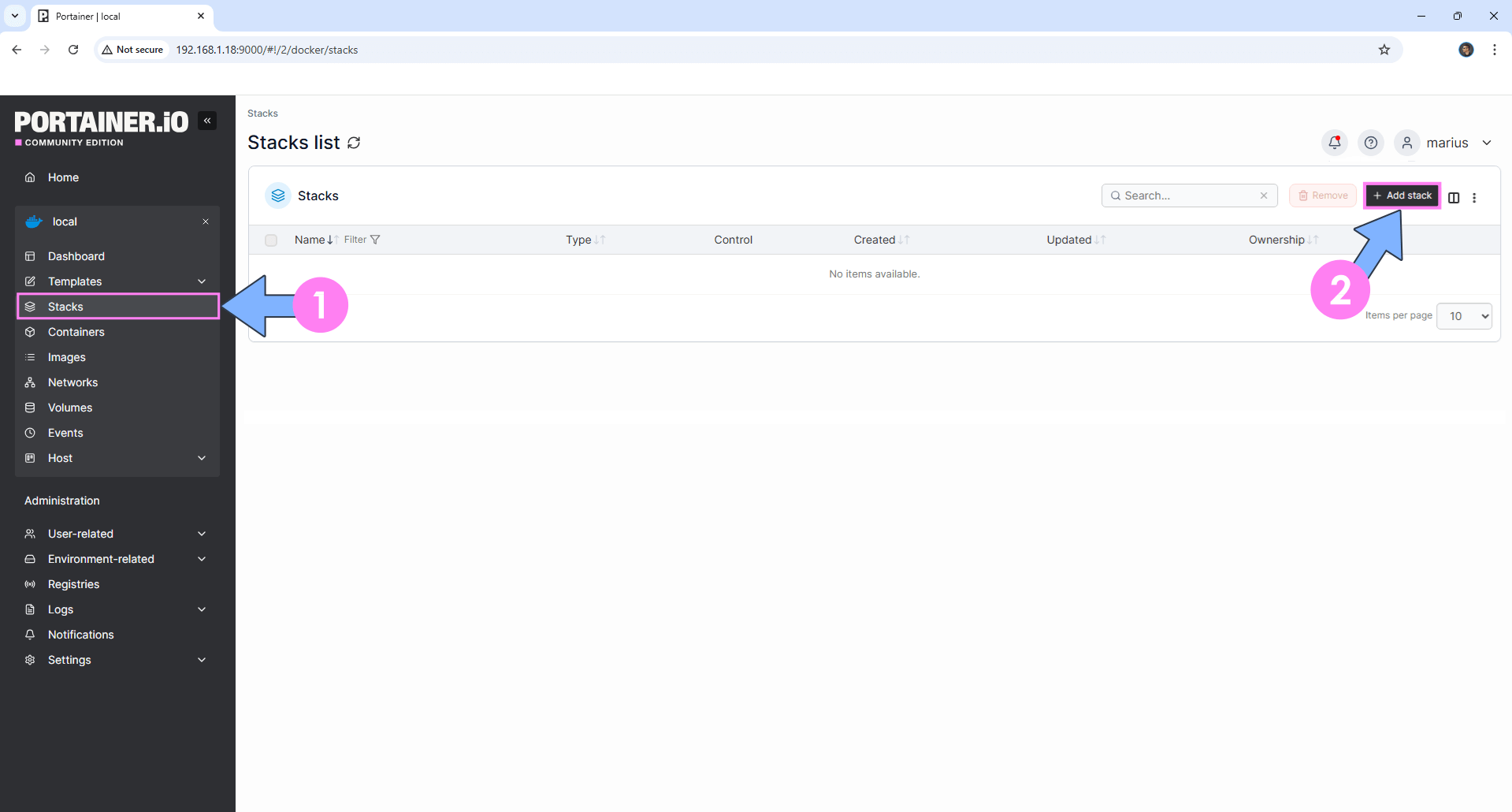
STEP 6
In the Name field type in tinyrss. Follow the instructions in the image below.
services:
db:
image: postgres:15-alpine
container_name: Tiny-Tiny-RSS-DB
restart: on-failure:5
healthcheck:
test: ["CMD", "pg_isready", "-q", "-d", "ttrss", "-U", "ttrssuser"]
timeout: 45s
interval: 10s
retries: 10
environment:
POSTGRES_USER: ttrssuser
POSTGRES_PASSWORD: ttrsspass
POSTGRES_DB: ttrss
volumes:
- /volume1/docker/tinyrss/db:/var/lib/postgresql/data:rw
app:
image: cthulhoo/ttrss-fpm-pgsql-static:latest
container_name: Tiny-Tiny-RSS-APP
restart: on-failure:5
environment:
TTRSS_DB_TYPE: pgsql
TTRSS_DB_HOST: db
TTRSS_DB_PORT: 5432
TTRSS_DB_NAME: ttrss
TTRSS_DB_USER: ttrssuser
TTRSS_DB_PASS: ttrsspass
TTRSS_SELF_URL_PATH: http://localhost:8280/tt-rss
TTRSS_SESSION_COOKIE_LIFETIME: 2592000
HTTP_PORT: 8280
ADMIN_USER_PASS: mariushosting
ADMIN_USER_ACCESS_LEVEL: 10
OWNER_UID: 1000
OWNER_GID: 1000
volumes:
- /volume1/docker/tinyrss/app:/var/www/html:rw
depends_on:
- db
updater:
image: cthulhoo/ttrss-fpm-pgsql-static:latest
container_name: Tiny-Tiny-RSS-UPDATER
restart: on-failure:5
environment:
TTRSS_DB_TYPE: pgsql
TTRSS_DB_HOST: db
TTRSS_DB_PORT: 5432
HTTP_PORT: 8280
TTRSS_DB_NAME: ttrss
TTRSS_DB_USER: ttrssuser
TTRSS_DB_PASS: ttrsspass
TTRSS_SELF_URL_PATH: http://localhost:8280/tt-rss
TTRSS_SESSION_COOKIE_LIFETIME: 2592000
OWNER_UID: 1000
OWNER_GID: 1000
volumes:
- /volume1/docker/tinyrss/app:/var/www/html:rw
depends_on:
- app
command: /opt/tt-rss/updater.sh
web-nginx:
image: cthulhoo/ttrss-web-nginx:latest
container_name: Tiny-Tiny-RSS-NGINX
restart: on-failure:5
ports:
- 8280:80
volumes:
- /volume1/docker/tinyrss/app:/var/www/html:ro
depends_on:
- app
Note: Before you paste the code above in the Web editor area below, change the value for ADMIN_USER_PASS and type in your own password. mariushosting is an example for a password.
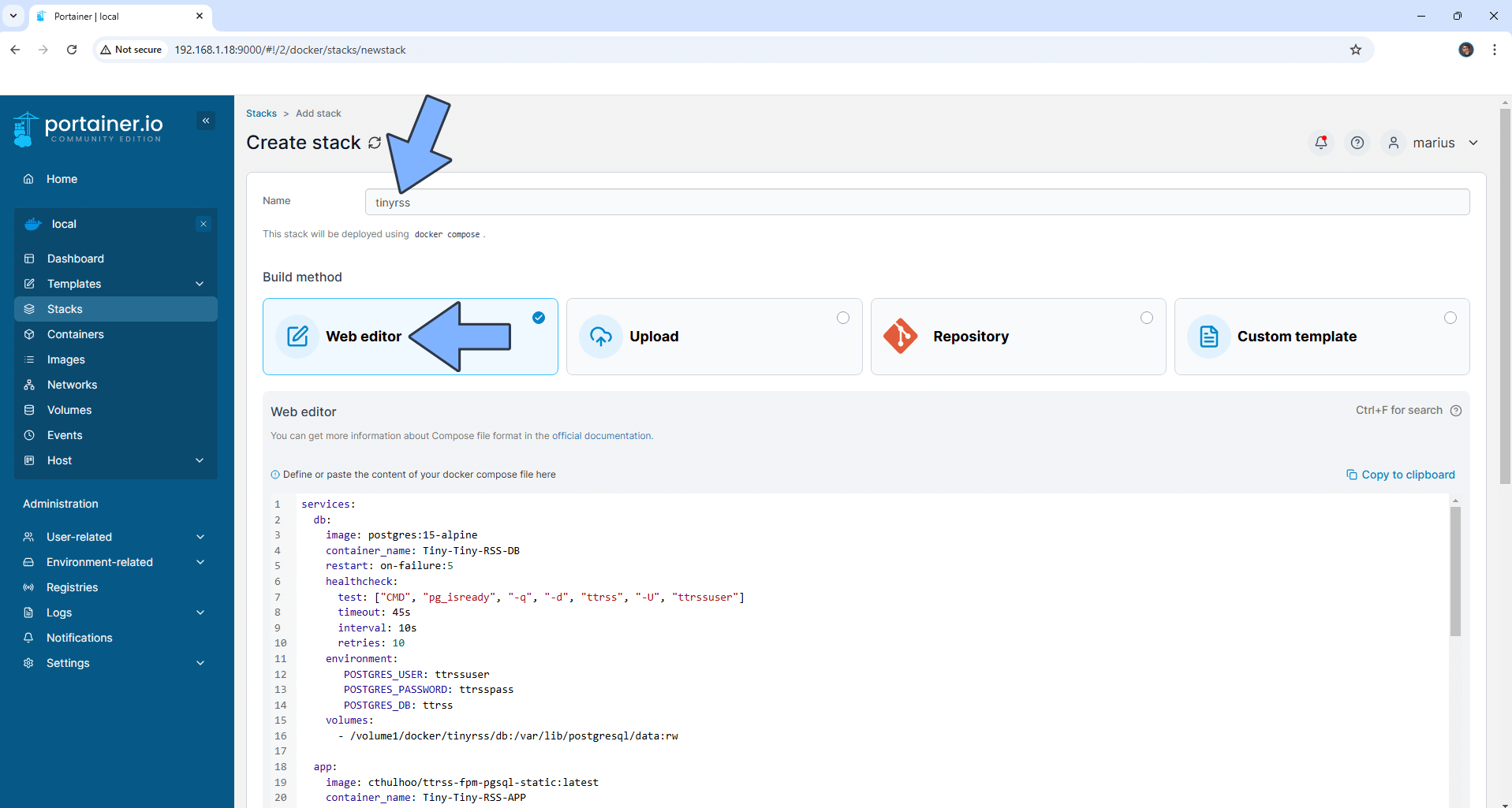
STEP 7
Scroll down on the page until you see a button named Deploy the stack. Click on it. Follow the instructions in the image below. The installation process can take up to a few minutes. It will depend on your Internet speed connection.
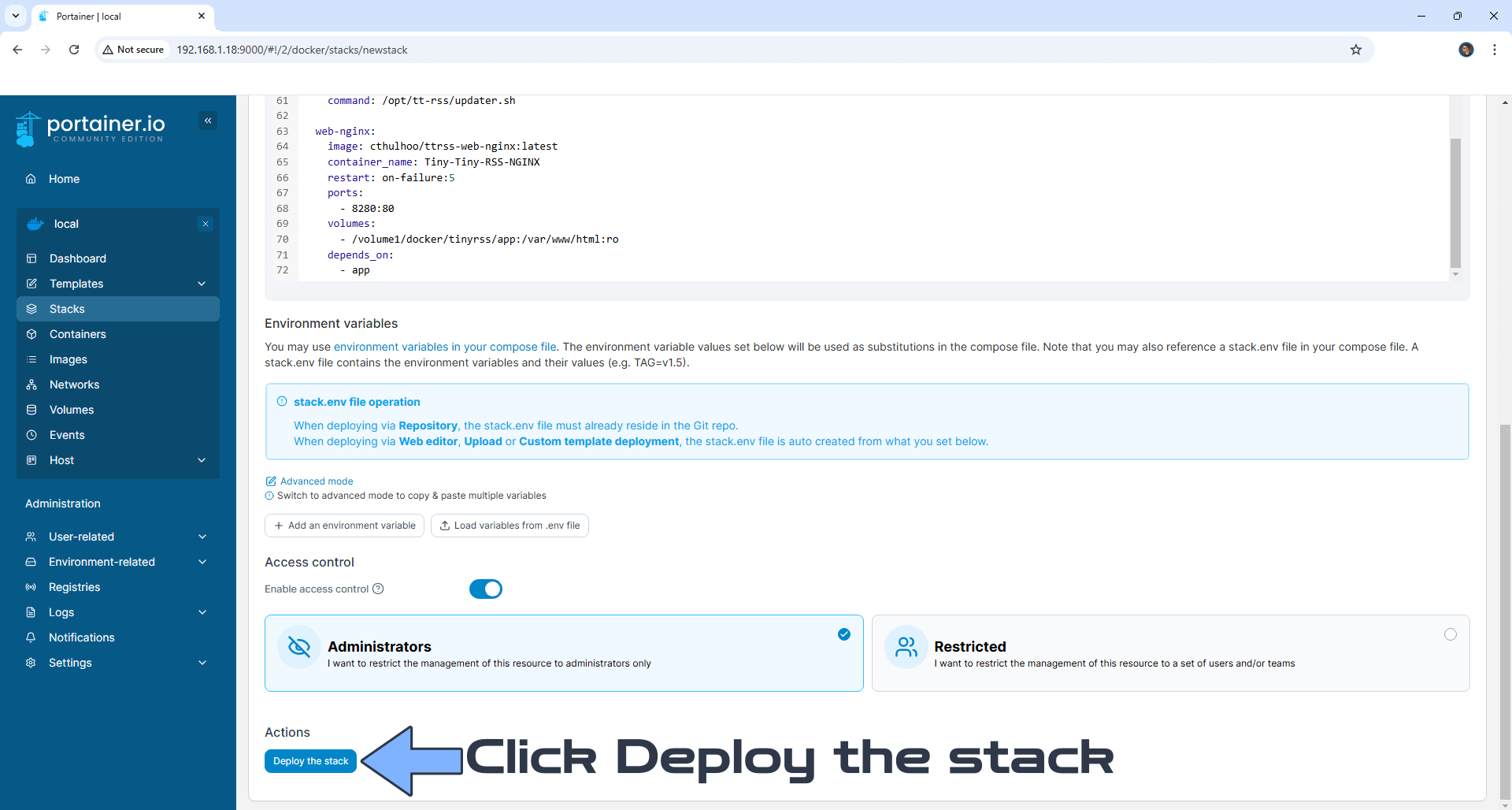
STEP 8
If everything goes right, you will see the following message at the top right of your screen: “Success Stack successfully deployed“.
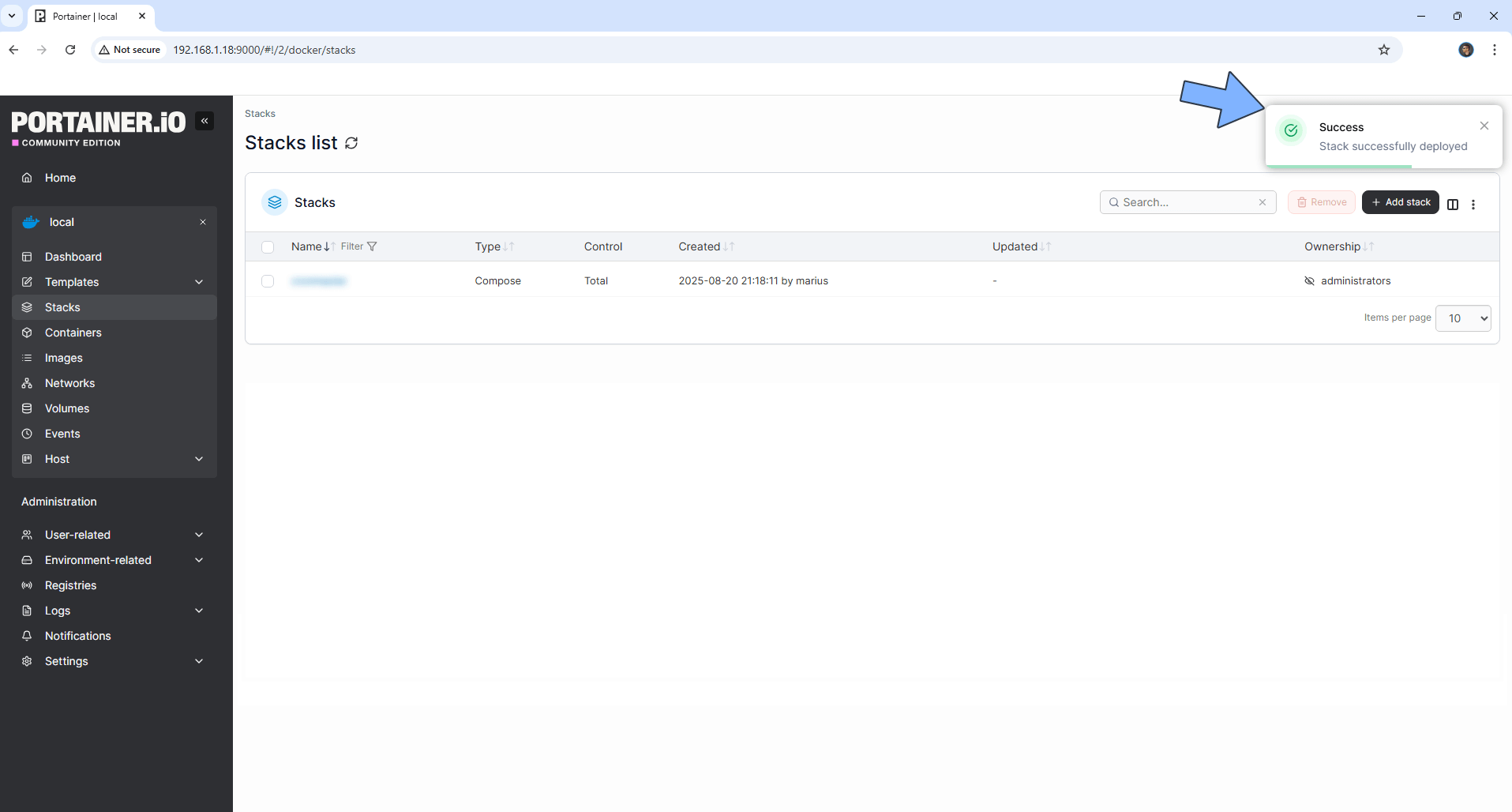
STEP 9
🟢Please Support My work by Making a Donation. Almost 99,9% of the people that install something using my guides forget to support my work, or just ignore STEP 1. I’ve been very honest about this aspect of my work since the beginning: I don’t run any ADS, I don’t require subscriptions, paid or otherwise, I don’t collect IPs, emails, and I don’t have any referral links from Amazon or other merchants. I also don’t have any POP-UPs or COOKIES. I have repeatedly been told over the years how much I have contributed to the community. It’s something I love doing and have been honest about my passion since the beginning. But I also Need The Community to Support me Back to be able to continue doing this work.
STEP 10
The installation process can take up to a few seconds/minutes. It will depend on your Internet speed connection. Now open your browser and type in http://Synology-ip-address:8280 Type in the default Username which is admin and the Password (ADMIN_USER_PASS) that you have previously added at STEP 6. Click Log in. Follow the instructions in the image below.
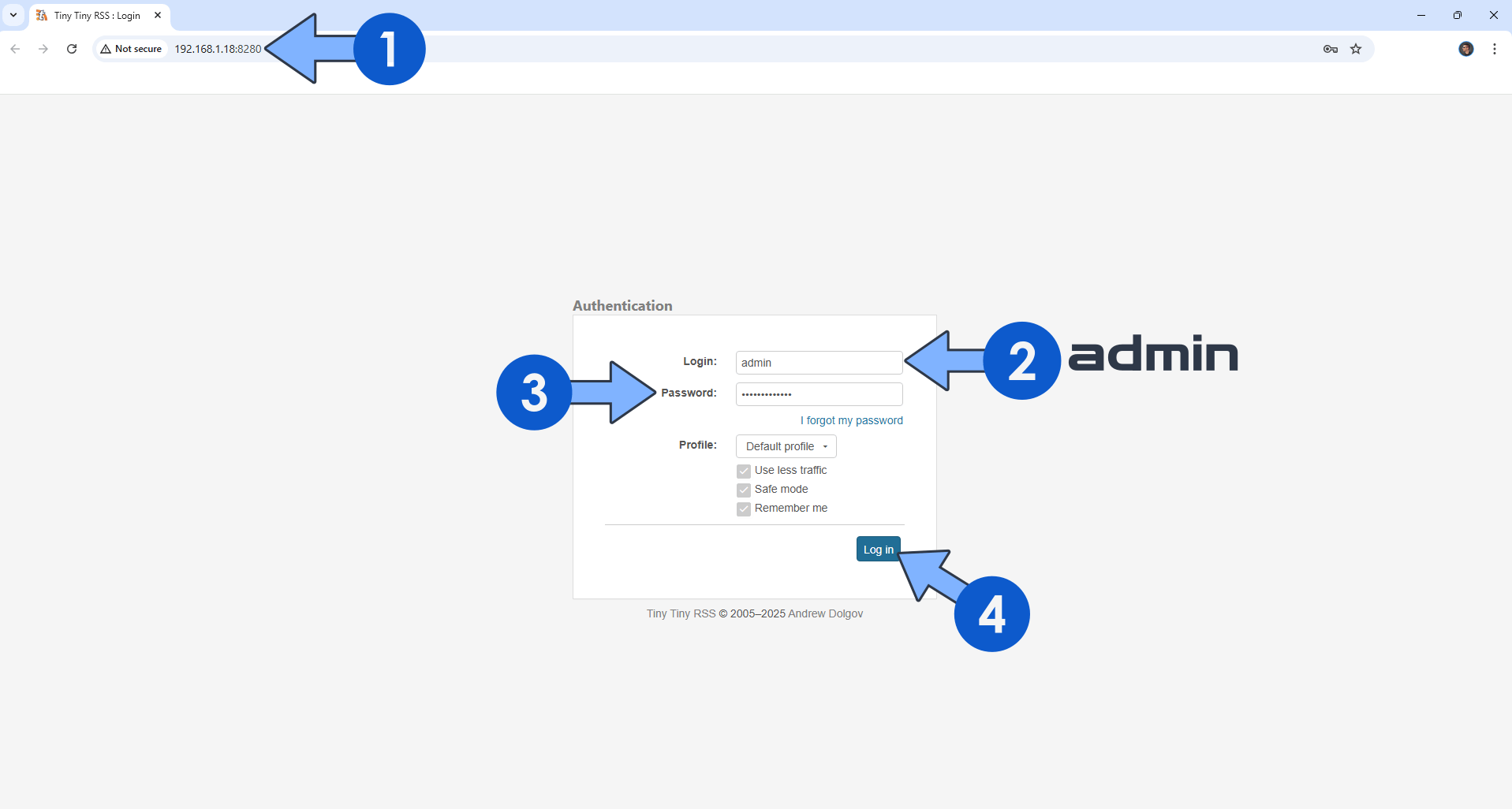
STEP 11
At the top right of the page, click on the 3 horizontal lines, then Preferences. Follow the instructions in the image below.
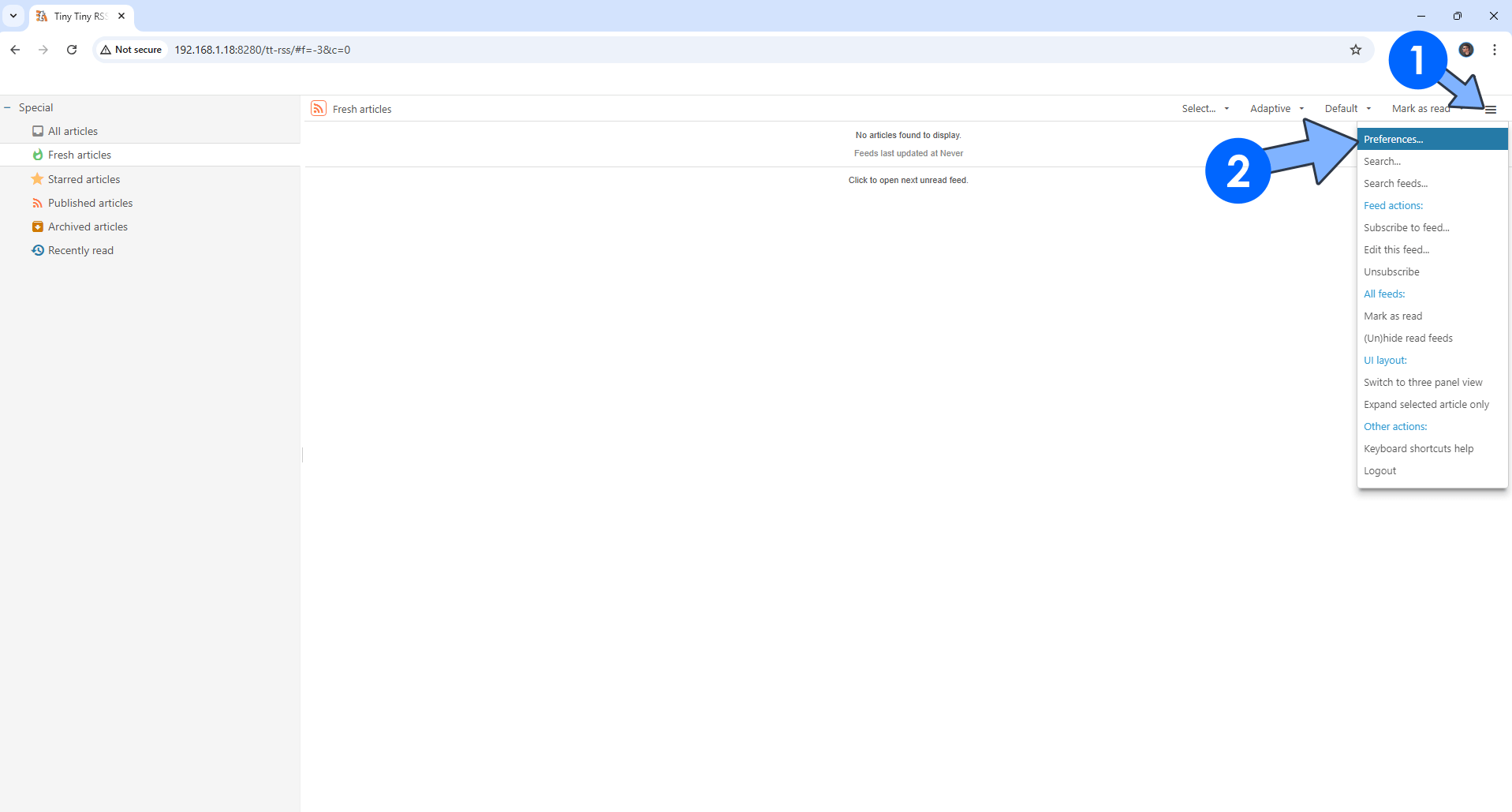
STEP 12
From the Time zone list, select your Time zone. Change the theme to Dark by selecting night_blue. Click Save configuration. Follow the instructions in the image below.
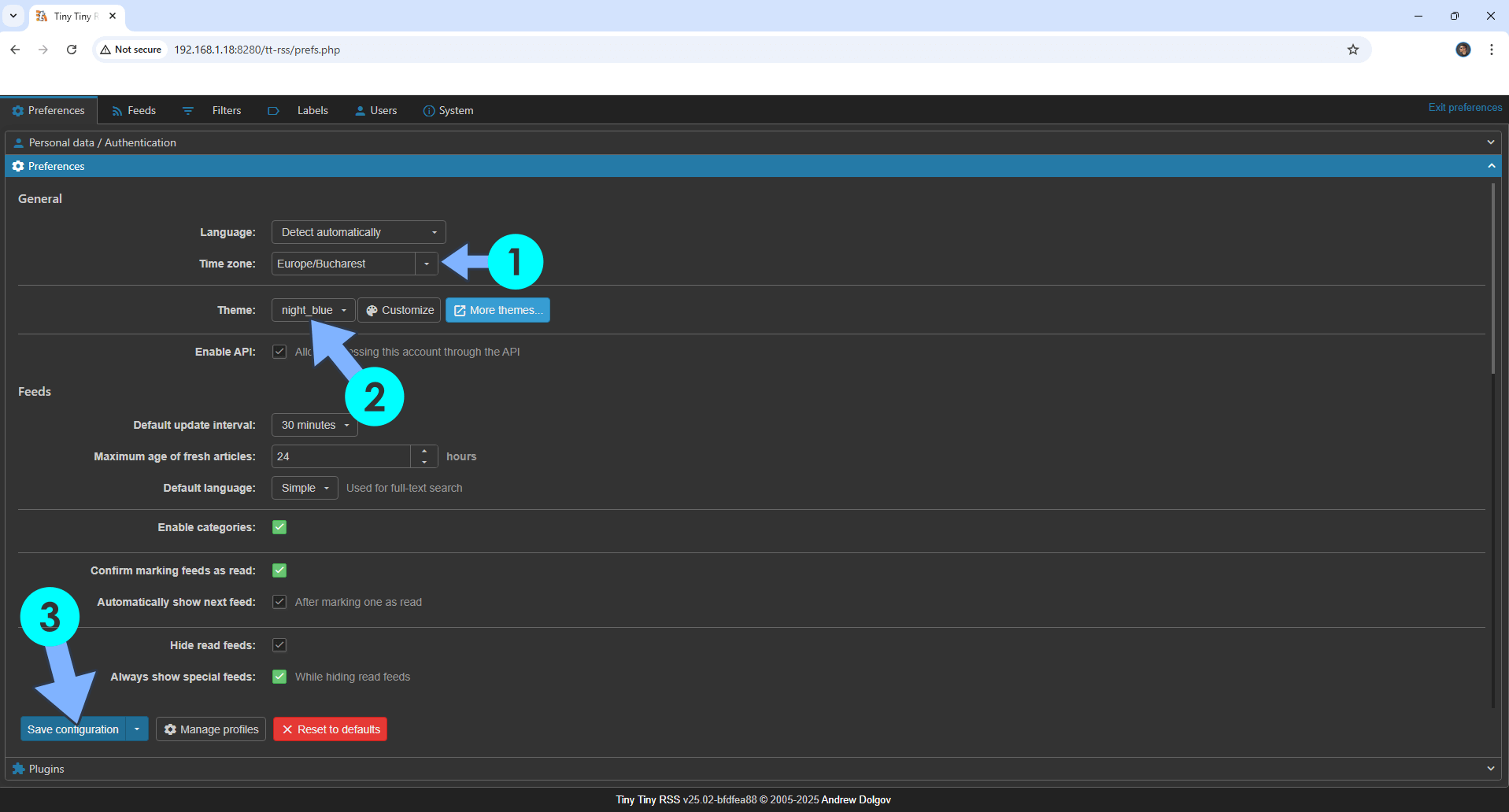
STEP 13
Click the Feeds tab, then the Categories tab. Click Add category to add your first category. Follow the instructions in the image below.
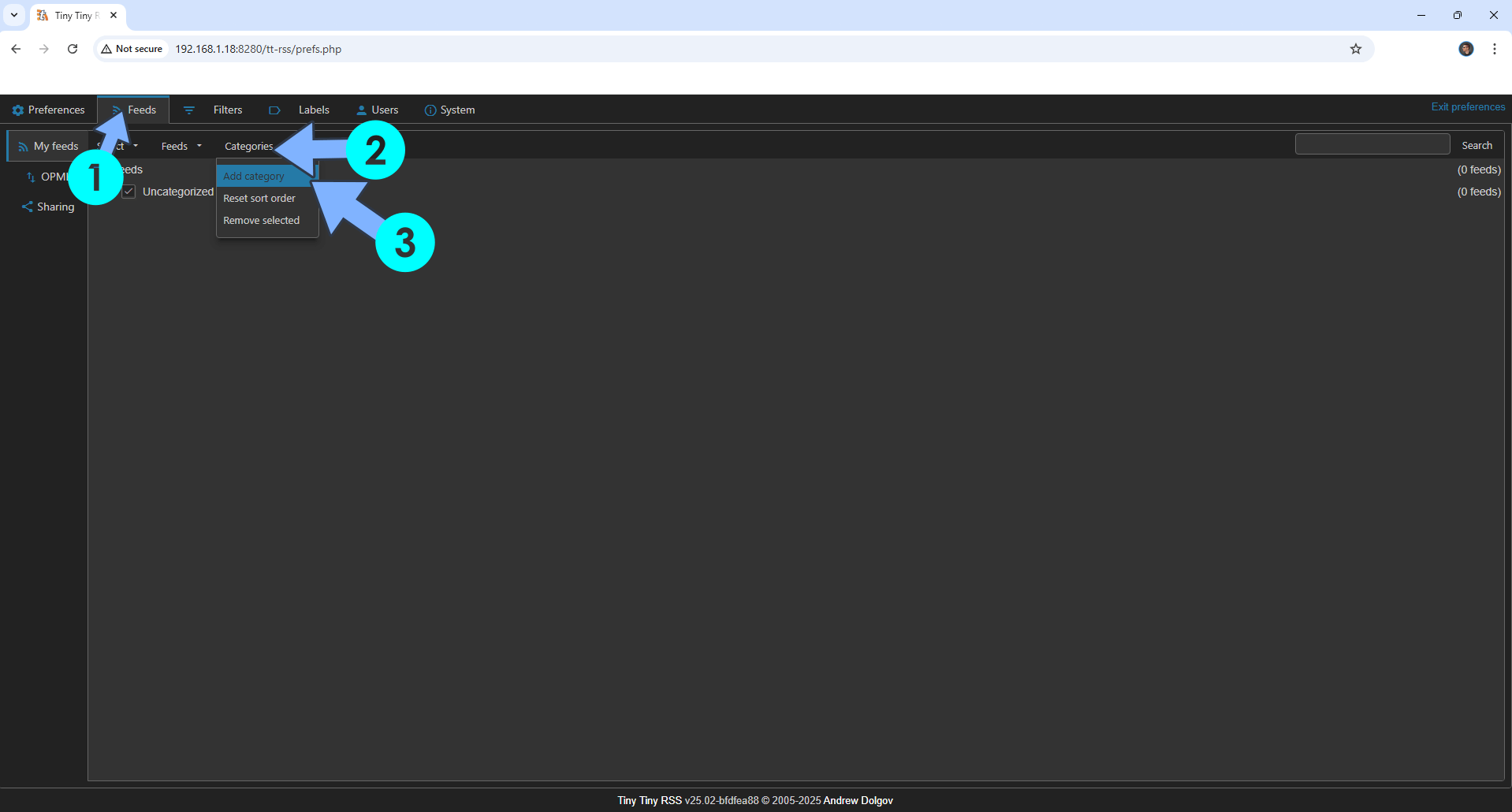
STEP 14
Go back to your Tiny Tiny RSS homepage at http://Synology-ip-address:8280
At the top right of the page, click on the 3 horizontal lines then Subscribe to feed.
Follow the instructions in the image below.
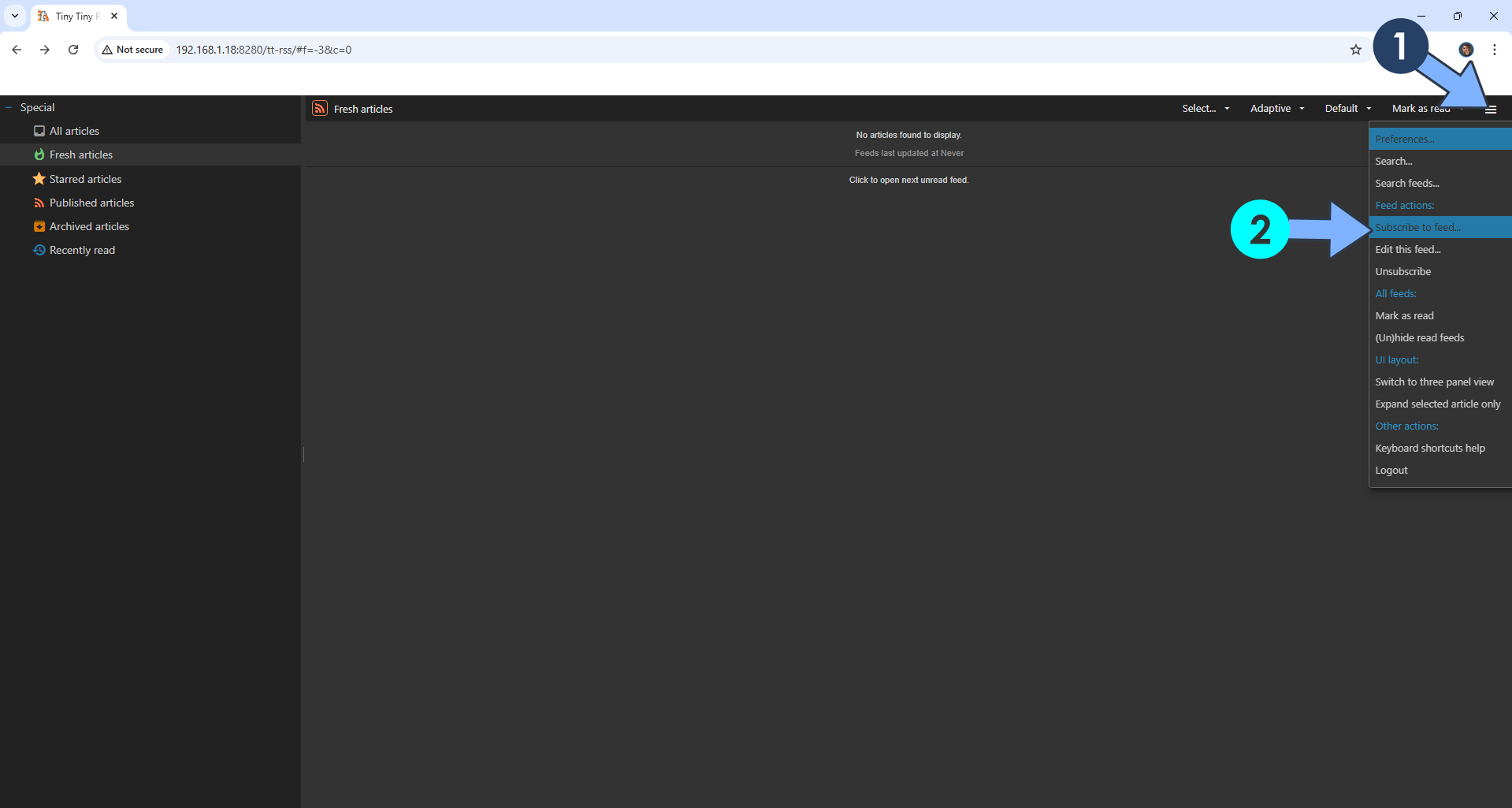
STEP 15
In the apposite area, type in the https:// link of your favorite RSS. Place the RSS link in the category that you have previously created at STEP 13, then click Subscribe. Follow the instructions in the image below.
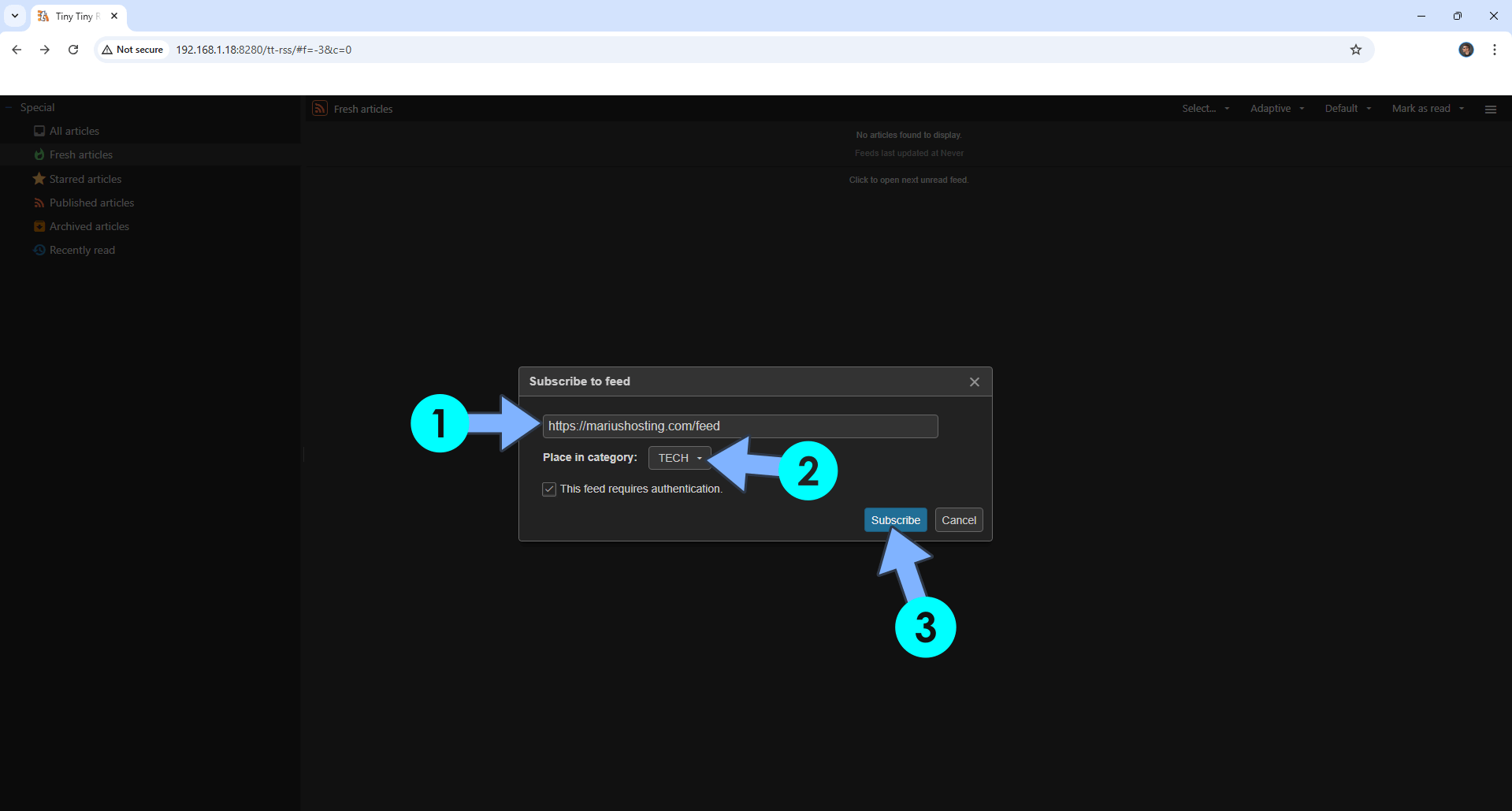
STEP 16
Your RSS link will be ready. Wait approximately 5 minutes for the RSS link to be fetched, then refresh the page. Follow the instructions in the image below.
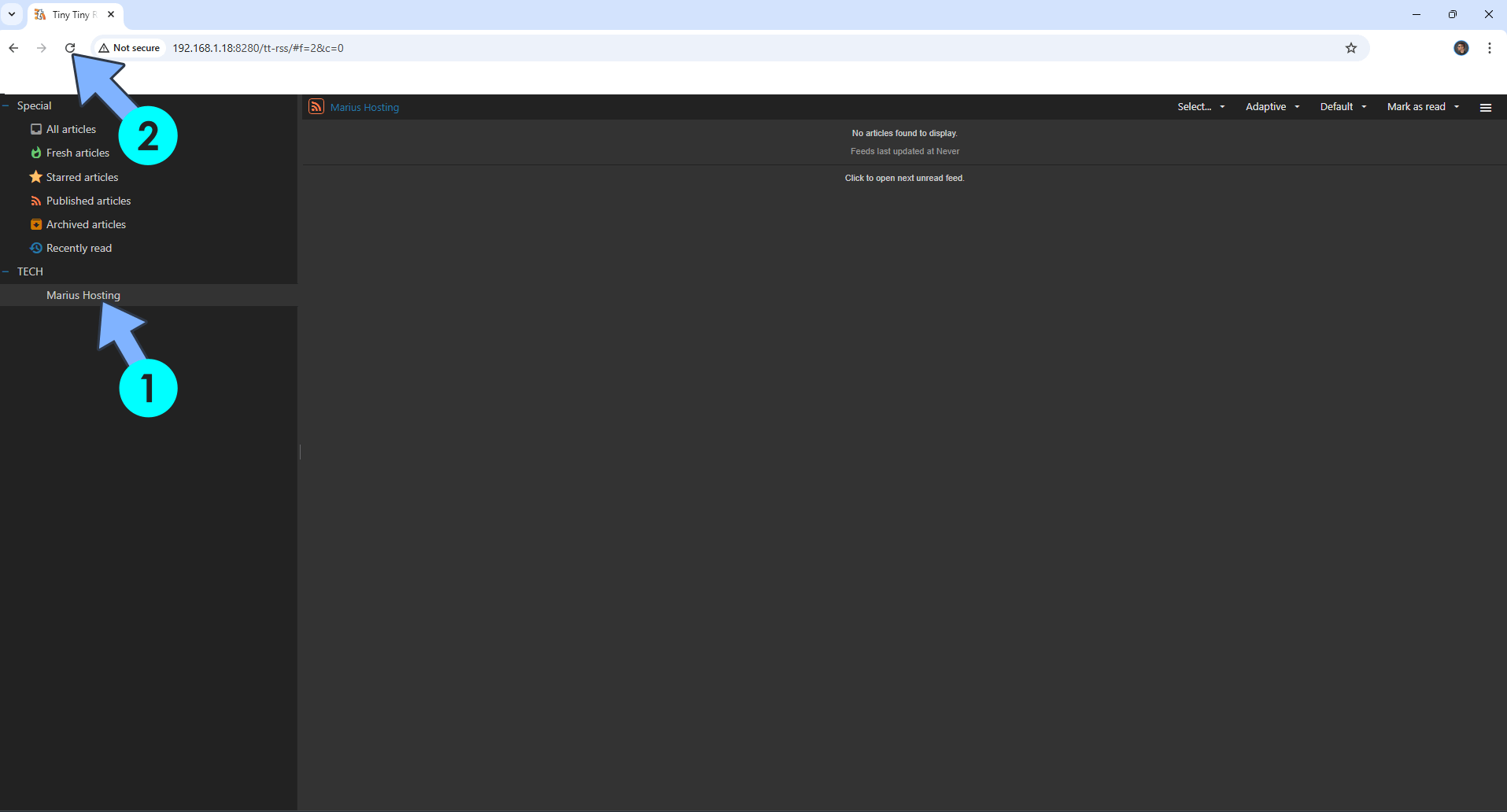
STEP 17
Your Tiny Tiny RSS dashboard at a glance!
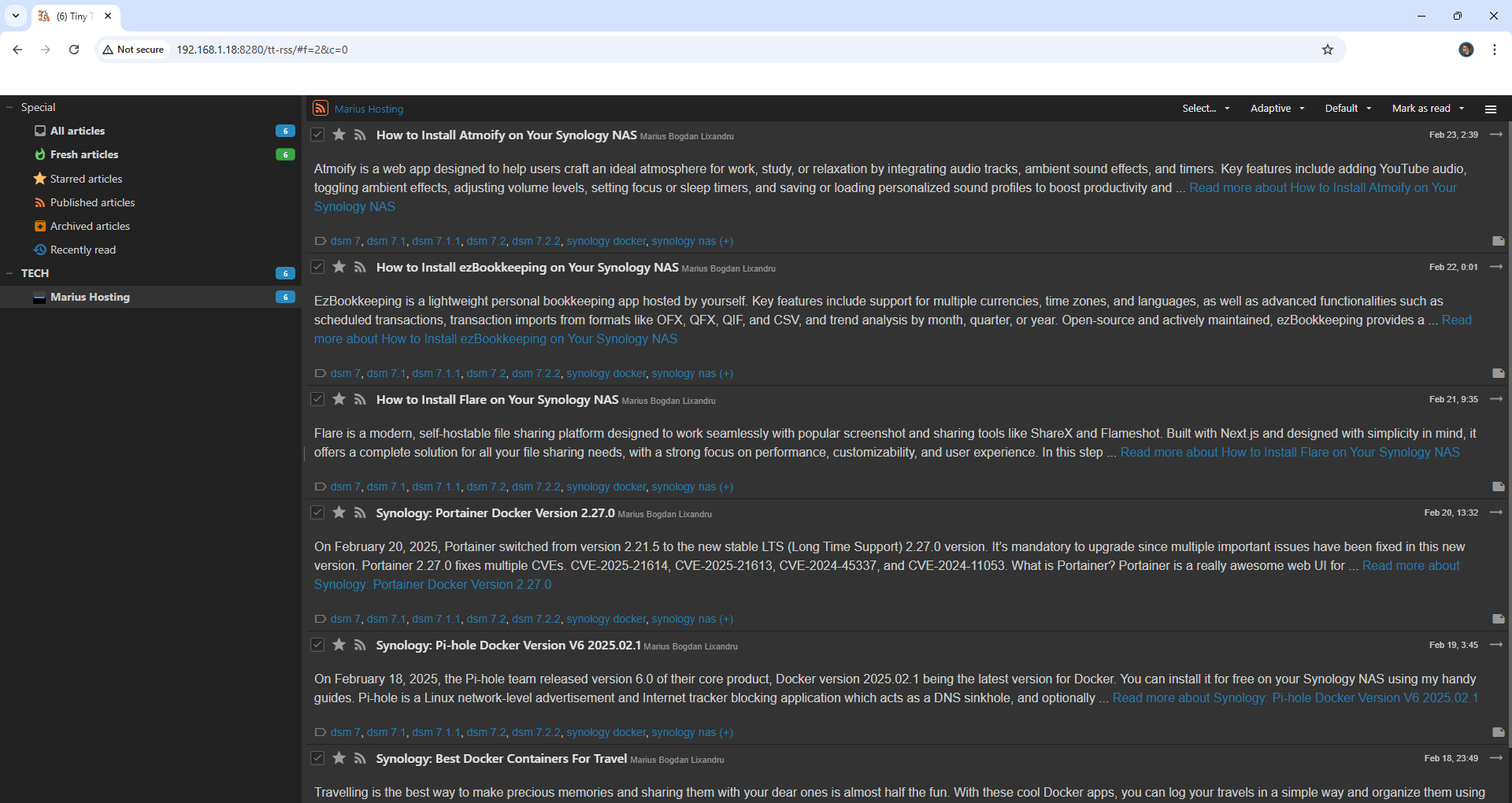
Enjoy Tiny Tiny RSS!
If you encounter issues by using this container, make sure to check out the Common Docker issues article.
Note: If you want to run the Tiny Tiny RSS container over HTTPS, check How to Run Docker Containers Over HTTPS. In order to make Tiny Tiny RSS work via HTTPS, it’s mandatory to activate WebSocket.
Note: Can I run Docker on my Synology NAS? See the supported models.
Note: How to Back Up Docker Containers on your Synology NAS.
Note: Find out how to update the Tiny Tiny RSS container with the latest image.
Note: How to Free Disk Space on Your NAS if You Run Docker.
Note: How to Schedule Start & Stop For Docker Containers.
Note: How to Activate Email Notifications.
Note: How to Add Access Control Profile on Your NAS.
Note: How to Change Docker Containers Restart Policy.
Note: How to Use Docker Containers With VPN.
Note: Convert Docker Run Into Docker Compose.
Note: How to Clean Docker.
Note: How to Clean Docker Automatically.
Note: Best Practices When Using Docker and DDNS.
Note: Some Docker Containers Need WebSocket.
Note: Find out the Best NAS Models For Docker.
Note: Activate Gmail SMTP For Docker Containers.
This post was updated on Saturday / August 23rd, 2025 at 7:23 PM
